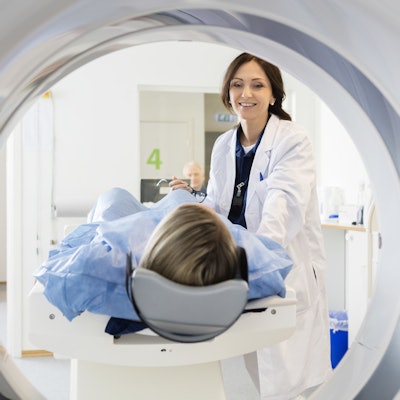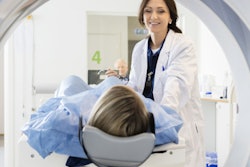
Use of CT has increased significantly over the last few years, raising concerns about radiation exposure for patients and sparking debate over how to reduce it. But even if it's generally agreed that reducing CT doses is a good idea, there are a number of barriers to doing so, according to a study published April 8 in Academic Radiology.
These barriers can be challenging to address, since some of them are associated with individual factors rather than organizational ones, wrote a team led by Robin Whitebird, PhD, of the University of St. Thomas in St. Paul, MN.
"Our study identified barriers to dose optimization that require change at the individual level, such as radiologists or technologists changing their practice," the group wrote.
Information about barriers and challenges to optimizing CT radiation dose is lacking, according to the researchers. So Whitebird and colleagues conducted an interview study with 26 organizational leaders from 19 healthcare systems in the U.S., Europe, and Japan.
The 26 participants included 11 radiologists, eight medical physicists, five CT technologists, and two radiology department managers. The interview included 13 questions that covered topics including leadership, the importance of dose optimization for CT, and approaches used to optimize dose to strategies to affect dose management.
The team identified the following six barriers to optimizing CT dose:
- Resistance to change (88%): Preference for image appearance that results from higher-dose exams and concerns about diagnostic accuracy with lower radiation doses
- Limited time and resources (61%): Difficulty managing other needs in the department
- Complex organizational structure (50%): Size and decision-making style make change difficult to implement.
- Lack of leadership support (50%): Dose concerns compete with other concerns, such as patient safety.
- Variations in CT equipment (57%): The challenge of optimizing dose across different machines and manufacturers
- Variability in CT protocols (50%): Differences in types of protocols and use of these
The group also found that when it came to perceived importance of optimizing CT dose, the perception varied by type of respondent:
| Perceptions of importance of optimizing CT radiation dose | |
| Type of respondent | Mean score |
| Radiology leadership | 8.4 |
| Radiologic technologists | 7.2 |
| Radiologists | 7.1 |
| Hospital administration (outside of radiology) | 5.8 |
The study findings suggest that individual factors are primary when it comes to obstacles to optimizing radiation dose on CT, the group noted. And although it may be difficult to address these barriers, it's worth trying, Whitebird and colleagues concluded.
"Understanding organizational-level barriers to change can assist in developing more robust improvement for CT imaging, leading to sustainable improvements ... in dose optimization within healthcare organizations," they wrote.





















